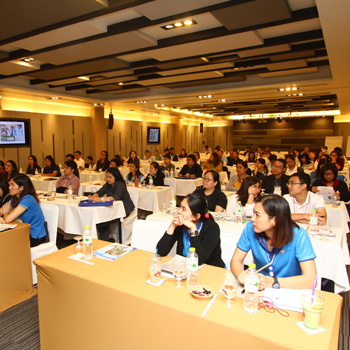กรมส่งเสริมการค้าระหว่างประเทศ (สค.) กระทรวงพาณิชย์ เผยประมงญี่ปุ่นจับปลาหมึก “ซึรึเมะอิกะ” ได้น้อยลง และรัฐบาลยังกำหนดโควต้าจับจนทำให้เกิดปัญหาการขาดแคลน แนะไทยใช้โอกาสนี้ผลักดันส่งออกปลาหมึกไทยเข้าไปเพิ่มส่วนแบ่งตลาด พร้อมขอให้เข้มงวดเรื่อง IUU เพื่อสร้างความเชื่อมั่นต่อสินค้าไทย
นางจันทิรา ยิมเรวัต วิวัฒน์รัตน์ อธิบดีกรมส่งเสริมการค้าระหว่างประเทศ เปิดเผยว่า สำนักงานส่งเสริมการค้าในต่างประเทศ ณ กรุงโตเกียว ได้รายงานถึงโอกาสการส่งออกปลาหมึก “ซึรึเมะอิกะ” หรือปลาหมึกบิน ของไทยเข้าสู่ตลาดญี่ปุ่น หลังจากได้สำรวจความต้องการในตลาดแล้วพบว่า ขณะนี้ญี่ปุ่นประสบปัญหาการขาดแคลนปลากหมึกซึรึเมะอิกะ เพราะชาวประมงญี่ปุ่นจับปลาหมึกชนิดนี้ได้ลดลง เพราะการเปลี่ยนแปลงของอุณหภูมิน้ำทะเล ทำให้ปลาหมึกโตช้า และยังมีการเข้ามาจับปลาหมึกของเรือประมงต่างชาติทั้งเกาหลีเหนือและจีนเพิ่มขึ้น ทำให้ประมงญี่ปุ่นจับได้น้อยลง
ทั้งนี้ ผลจากการที่ปลาหมึกซึรึเมะอิกะเข้าสู่ตลาดน้อยลงทำให้ราคาปรับตัวสูงขึ้น โดยราคาขายส่งอยู่ที่ 564 เยนต่อกิโลกรัม (กก.) หรือประมาณ 164 บาทต่อ กก. เพิ่มขึ้นกว่าร้อยละ 80 จากเมื่อ 2 ปีก่อนหน้า และยังส่งผลให้ร้านอาหารที่ใช้ปลาหมึกในการประกอบอาหารมีรายได้ลดลง และหันไปใช้สัตว์น้ำประเภทอื่นทดแทน
ขณะเดียวกัน กรมประมงญี่ปุ่น ยังได้มีมาตรการกำหนดโควต้าจับปลาหมึกซึรึเมะอิกะ ปีงบประมาณ 2561 (เม.ย. 2561-มี.ค. 2562) ให้เหลือเพียง 97,000 ตัน เพื่อให้ปลาหมึกได้มีโอกาสแพร่พันธุ์มากขึ้น และเพิ่มปริมาณการนำเข้าปลาหมึกซึรึเมะอิกะจากต่างประเทศในปี 2561 เป็น 87,000 ตัน เพื่อลดผลกระทบจากการขาดแคลนวัตถุดิบ และยังมีแนวโน้มว่าญี่ปุ่นอาจต้องเพิ่มโควต้านำเข้าอีกในเร็วๆ นี้
“ผลจากความต้องการปลาหมึกซึรึเมะอิกะที่เพิ่มขึ้นดังกล่าว ทำให้เป็นโอกาสสำหรับปลาหมึกไทย โดยไทยสามารถส่งออกปลาหมึกมงโกอิกะหรือหมึกกระดองไปยังญี่ปุ่น ภายใต้ความตกลง JTEPA (ความตกลงหุ้นส่วนทางเศรษฐกิจไทย-ญี่ปุ่น) ได้ เพราะญี่ปุ่นเก็บภาษีนำเข้าเป็นศูนย์แล้ว แต่สำหรับปลาหมึกซึรึเมะอิกะและปลาหมึกอื่นๆ ญี่ปุ่นเก็บภาษีนำเข้าระหว่างร้อยละ 3.5-5 ซึ่งขณะนี้ ไทยกำลังอยู่ระหว่างการเจรจาให้ญี่ปุ่นลดภาษีนำเข้าในกลุ่มปลาหมึกเพิ่มเติมอยู่ หากทำสำเร็จจะช่วยสนับสนุนการส่งออกและสร้างแต้มต่อให้กับผู้ประกอบการไทย”
อย่างไรก็ตาม ในการส่งออกปลาหมึกไปยังตลาดญี่ปุ่น ผู้ประกอบการไทยต้องมีการกำกับดูแลเกี่ยวกับการประมง เพื่อไม่ให้ผิดกฎหมายหรือกฎระเบียบต่างๆ โดยเฉพาะประเด็นเกี่ยวกับการทำประมงที่ผิดกฎหมาย การประมงที่ขาดการรายงาน และการประมงที่ขาดการควบคุม (IUU) เพราะนอกจากจะเป็นปัจจัยสนับสนุนการส่งออกของอุตสาหกรรมประมงของไทยแล้ว ยังเป็นการรักษาทรัพยากรธรรมชาติให้มีความยั่งยืนต่อไปด้วย
ในปี 2560 ญี่ปุ่นมีการนำเข้าปลาหมึกซึรึเมะอิกะ ปริมาณ 93,069 ตัน แหล่งนำเข้าสำคัญ ได้แก่ จีน ชิลี และเปรู ปริมาณ 44,744 ตัน , 14,744 ตัน และ 11,593 ตันตามลำดับ และนำเข้าจากไทยเป็นลำดับที่ 9 ปริมาณ 85 ตัน โดยปลาหมึกซึรึเมะอิกะที่ไทยส่งออกไปยังญี่ปุ่น มีทั้งรูปแบบปลาหมึกสดและปลาหมึกแปรรูป









